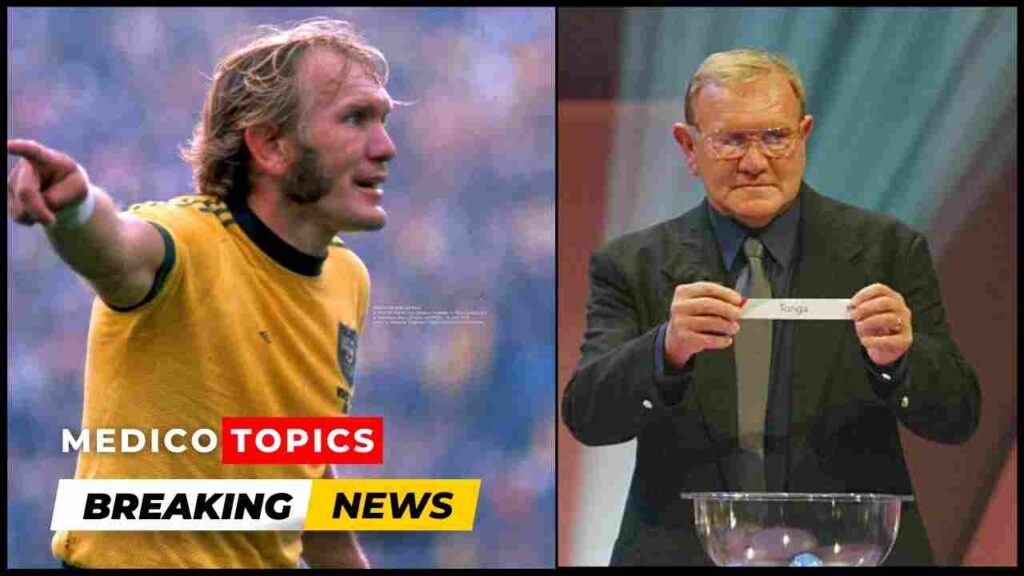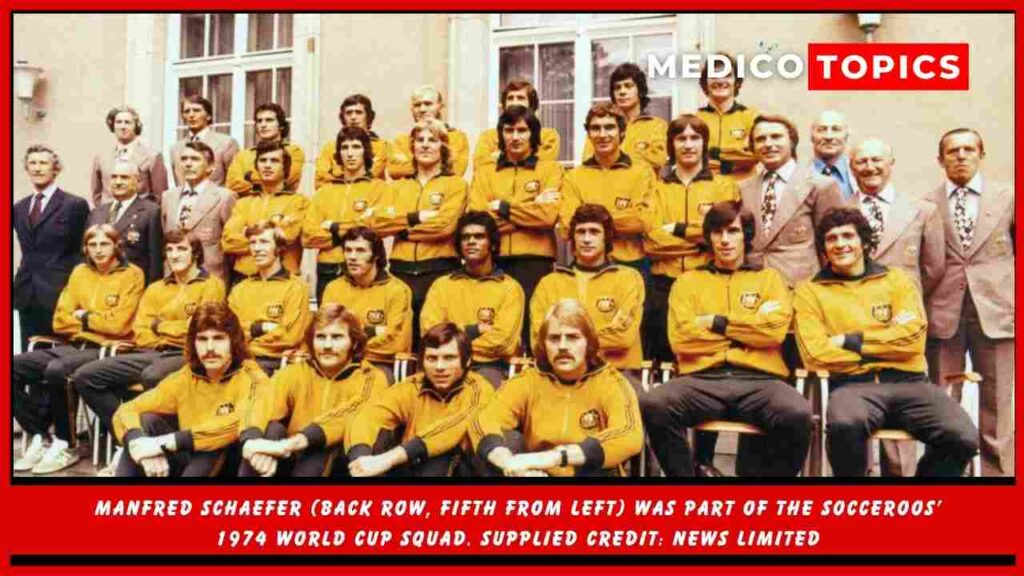
Football in Australia laments the passing of legendary Socceroo Manfred Schaefer. He represents what was undoubtedly the best time in Sydney Olympic FC’s history. He played for our country’s first-ever FIFA World Cup team in 1974, starting all three of Australia’s group games in West Germany. Find out what happened to him and Manfred Schaefer cause of death.
Manfred Schaefer passed away
The Socceroos legend Manfred Schaefer passed away at the age of 80, and the Australian football world is in grief. When he was 10 years old, Schaefer immigrated to Australia from what was then East Germany.
For the 1974 World Cup, which was being held in what was then West Germany, he was a member of the Socceroos team. He took time off from his job as a milkman to participate in the event. From 1967 and 1974, the former defender played in 73 matches for Australia, 49 of which were “A” internationals.
Manfred Schaefer cause of death
Manfred Schaefer, a 1974 legend, undoubtedly contributed significantly to the success and togetherness of the team. He passed away quietly today at the age of 80 in his longtime Cabramatta home after a protracted battle with illness.
Chris Nikou, the chairman of the FA, referred to Schaefer as a “giant of Australian football” and noted that he played club football for Blacktown and St. George-Budapest. Despite not being an Australian native, Manfred gave his all to the nation, proudly representing it on and off the pitch, according to a statement from Nikou.
Even after ending his playing career, Manfred continued to have a positive impact on the careers of many of the best players in the country for almost three decades with his technical prowess and solid managerial abilities.

“Manfred loved Australian football at all levels and was frequently spotted cheering on the game at the grassroots, NPL, Australia Cup, or national team levels, where he will now be sadly lost but never forgotten.
“I would like to express my sincere condolences to the Schaefer family, his friends, and former teammates at this difficult time on behalf of Football Australia and the Australian football community. Manfred Schaefer, cap 198 forever.
Schaefer has coaching positions with St. George, Sydney Olympic, Brunswick-Juventus, APIA Leichhardt, Sydney Croatia, Marconi, Adelaide Sharks, and Parramatta Power after his retirement as a player in 1975.
Rasic speaks about his dear friend Schaefer
Rasic, who keeps in touch with several of the Socceroos from 1974, saw his dear friend a few weeks ago. Rasic, who was on the verge of tears, added,
“It was an emotional day, a great day. “Manfred was speechless, but he was aware of my presence. “He was a remarkable man and a fantastic footballer.
On the inside, he was soft and kind, despite his outside toughness. It’s incredible. In the past two days, I’ve received calls from Noddy (Adrian Alston) and Jimmy (Jimmy Rooney) it appears as though something is occurring.
The fact that Schaefer’s loss has sparked such a heartfelt display of grief and love on social media today is a testament to the kind of man he was. He not only made an impact on the sport in this nation as a player and coach but also as a person.
Rasic, who has seen far too many of his “guys leave this life,” is given the final say. “They are slowly drifting away from us, but they will never die.”
Who was Manfred Schaefer?
Manfred Schaefer played defense for association football. He achieved success with St. George Budapest at the club level. He competed in his native Germany’s 1974 World Cup with the Australian national team.
With different clubs, he was the Australian National Soccer League’s runner-up multiple times as a coach. Manfred was born in the German town of Pillau in East Prussia (now Baltiysk, Russia). Before moving to Australia when he was 11 years old, his family fled to Bremen during the final days of World War II.
Manfred Schaefer Football career
He began playing football in 1960 with Blacktown City before moving on to the illustrious St. George Budapest in the NSW State Federation league. He assisted the club in its remarkable success while playing on a team that included players like Warren and Atti Abonyi.
It didn’t take him long to earn his first Socceroos cap, coming in 1967 during a 5-3 victory against New Zealand in a contentious tournament in Vietnam, which was played amid a conflict and under questionable conditions.
The 1974 World Cup finals, where Schaefer got to mark the renowned Germany striker Gerd Muller in a round two encounter that Australia lost 3-0, were the pinnacle of his 49 A-level appearances for the national side (one goal).
Due to his German heritage, Schaefer naturally garnered the interest of the German media before and throughout the competition and participated in several interviews. “He was more famous than me,” Rasic joked.
He last represented the Socceroos in that competition. After a five-year break, he advanced to coaching, leading St. George from 1975 to 1977.
Following stops with Brunswick Juventus (1988), APIA Leichhardt (1989-91), Sydney United (1992-94), Marconi Stallions (1995-97), and Adelaide Sharks, he returned to coaching at Sydney Olympic in the National Soccer League, serving as its head coach from 1982 to 1986. (1998-99). The last time Schaefer was involved, he was a Parramatta Power assistant coach (2002-2004).
KEEP READING,
Nashville Shooting Suspect: Who is Audrey Hale? All about the former Christian school student
Musician Mandy Mercier Passes Away on 74th Birthday
Follow us on Twitter for more updates.
Lavanya (Senior Editor) is a full-time content writer with almost 5 years of experience and a part-time teacher. She joined Medico Topics on the Breaking News trainee scheme in 2022 and now works on MedicoTopics.com. As a lifelong learner, She is constantly curious about learning new things and passionate about sharing knowledge with people through her writing and teaching.
